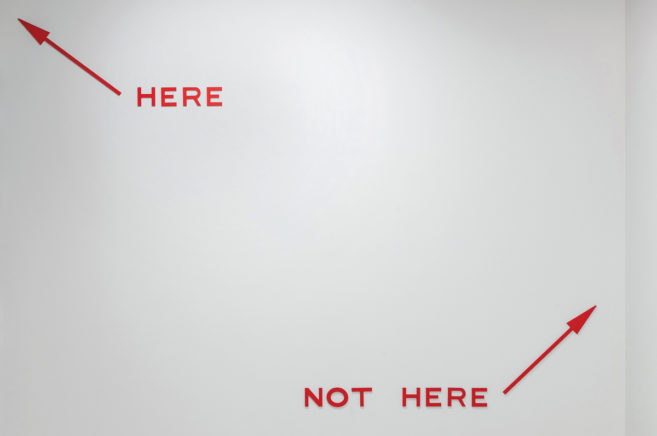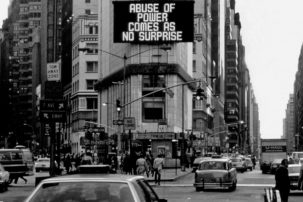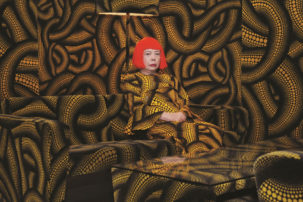—Our whole enterprise is deception.
—Deception?
—Dissimulation, false promises, double bottoms…
— INGMAR BERGMAN, The Magician
Of course, everyone knows that in my title I’m riffing off Nietzsche’s chapter heading from his book Ecce Homo. In part. I’ve added the self-help sales pitch to lessen the perception of self-aggrandizement. Who am I to compare myself to Nietzsche? But poor Nietzsche, reduced to writing his own summary reviews in this book—after so little critical response to and paltry sales for any of his books. Just like me!
Let him speak here, as if speaking for me as well:
I am one thing, my writings are another matter.—Before I discuss them, one by one, let me touch on the question of their being understood or not understood. I’ll do it as casually as decency permits; for the time for this question certainly hasn’t come yet. The time for me hasn’t come yet: some are born posthumously.
So to speak to a generation that refuses to be posthumous, with its blogs, Twitter and Facebook, I, too, am that posthumous man forced to review his own books in the absence of any other critical examination. Ironically, however. For one thing that Nietzsche taught me, and that I set myself in turn to teach you, is this performance I undertake in writing. To be posthumous is to be performative—a secret, though staged in public, that I share with you now. For the effects of this writing, I can only trust, will bear witness to a future when I shall be past. So to get on to the casual task at hand, to the first book, Double-Cross: The Hollywood Films of Douglas Gordon (2003).
This book is all lies. I confess. I tried to warn the reader, right from the opening epigraph—“I stood already committed to a profound duplicity of life”—lifted from The Strange Case of Dr. Jekyll and Mr. Hyde. Who would believe that an art book, art history or criticism lies? Let alone an artwork. But lying or deception is the crux of Douglas Gordon’s work. So a book that purports to be about him must lie—or prevaricate—in turn. This means that a book must operate according to the same principles as the artwork it discusses, transposed necessarily to another medium. And, thus, it must look for its resources in genres of writing, be they fictional or philosophical.
Before writing acknowledges its audience, it addresses its twofold context in performing a double mime. On the one hand, it achieves its voice by silently assuming a genre style. On the other hand, it invisibly inhabits a publication format. For instance, Double-Cross was written to read as noir but designed to be a mirror, that is, written to be a mirror of itself through the physical form of a book. Through the double-crossing chiasm of its middle chapter, the second part of the book mirrored the first—like the facing “mirrors” of Gordon’s video installations. But the second half was a dissembling mirror, which, nonetheless, revealed that the first half was a lie, in the process instantiating the two dissembling dimensions of Gordon’s work as verbal lie or visual dissimulation.
Did I choose the artist or did the art choose me? Could I know that the work revealed me as much as I uncovered its hidden mechanisms? Not yet. Where writing leads cannot be anticipated. The great lesson of writing, children, is abandonment. No theory, no thesis comes into play beforehand. The writer looks on while writing takes place. So I can hardly claim Spirit Hunter: The Haunting of American Culture by Myths of Violence (2005) for myself, ghostwritten as it was through me.
This inspired book, persuaded to madness through the descent of its writing, is a ghost story of the haunted-house variety, but also a Hollywood western. Based on Jeremy Blake’s dissolving phantasmagoria The Winchester Trilogy—history painting as video projection—the book seems fascinated more by Blake’s subject Sarah Winchester—troubled heiress to the Winchester rifle fortune, who obsessively built a fantastic, dysfunctional mansion to fend off her haunting spirits—than by the artist, who, tragically, would commit suicide. The book solved the mystery of Winchester’s building mania, the crime secreted away for so many years in the crypt of its dissembling construction, but only through descending by means of the image into its madness: the madness of the image. This is to say that the writing never diverged from Blake’s images, only descended and departed through them.
The ensuing radical accounting of the photographic image carried writing in the wake of its dismantling. The hallucination that was this house divided inside out through a wavering image that divided consciousness. The certitude for perception that the photograph represents is shaken by the following question: “Could we imagine that perception might be split otherwise, that it might be internally other, belonging not to us but to a doppelgänger to whom we belong?” Indeed, this would be the uncanny perception of another within our own seeing. Here is an abyssal dilemma where dissolving images, doubles and deception mingle as one, confoundedly phenomenal and phantomatic at once, and internal to our consciousness though we project them as uncannily foreign to us, abject rejections that turn images other.
As soon as there is a double there is deception. Of course, this is the great subject of Douglas Gordon’s work, with the mirror the ground of its operations: “As the double is already a type of madness, the other is thesign of this instability of consciousness.” The other within—the doppelgänger—is a deceptive other, a double and dissemblance at once. Let’s be clear: dissemblance is not a lie that hides truth behind the duplicity of animage. We could say of dissemblance what Gilles Deleuze said of repetition, that it “is truly that which disguises itself in constituting itself, that which constitutes itself only by disguising itself.” The double and dissemblance are born in and as each other at their origin. Born of these same conditions, the image, too, is inherently divided. Any writing is already entangled in this dilemma where dissembler, dissembled and dupe (artist, artwork and viewer), moreover, are necessary to the fabrication of any work. In this two-handed writing, to which the author passively surrenders, the right hand doesn’t necessarily know what the left hand has written.
Assembling a haunting, the Winchester house’s facade dissembled itself. Though secreted, Winchester’s protest thereby presented itself in public. Here is one of her unconsciously articulated lessons: dissembling is always performed in public. Thus, uncannily, Winchester’s haunting is a model for writing—but only if a decision is made now to welcome haunting as the welcome of the other within. For the writer, this welcome leads to a departure from the self. Writing’s destination is unknown even to itself.
Motifs only reveal themselves over time, appearing from book to book first in disguised form, then articulated—not as themes, theses or subject matter, but as operations within a text. How could a writer know that, divided as origins are, a double immediately falls away in the equation to carry on a virtual life, Hyde-like, only to surface later in the face-to-face of recognition? Books link subliminally one to the other. So the traits common to Douglas Gordon as an artist and Sarah Winchester as a madwoman are also those common here to writing itself. In complicity with the artwork, writing weaves a dissemblance of dissolving images into the double of its own duplicitous medium.
The recursive structure of the double leads to troubled returns, so it should be no surprise that haunting persists in the next book, Stan Douglas (2006), published by DuMont in English and German editions to accompany the dreaded Flick Collection of Douglas’s work. This book is all about returns. I wrote it as an allegory of the iterated and belated New World artist’s relation to Old World culture—there where it counts, in the counting of capital and culture. That is, the book is really the story of us colonials here. So written, my overarching narrative uncannily accounts, for the first time, for all of Douglas’s complex works. But this was not the only aim.
The misty rainforests of Canada’s West Coast and the dark European woods have been in communication since first contact, circulating revenues of the repressed…and now haunting returns to its encrypted capital source—in Germany: “It is no surprise that this contaminating revisitation only sends back what was already haunted by the machine at its source.” In my narrative, I followed Douglas to Germany, where his work had been so well received, like that of the Vancouver School, with which Douglas is associated. He would test his welcome there, proffering a taunting haunting, in their face—but would they recognize it as such? Apparently not. An open secret of unwelcome was perhaps too well disguised in the uncanny apparatus of his highly popular Der Sandmann. Recognizing that this return message had not been received, Douglas came back years later—when the return of the repressed was a returning revenge— to deliver a blow to the heart of the dark woods of Documenta 11 with his relentless masterwork Suspiria. Copying Douglas in all things by explicitly acknowledging its publication in Germany, my book was equally aggressive— while disguised. Would it also be recognized here in Canada as an implicit critique of the Vancouver School, as Douglas’s work always was, though it was rarely acknowledged as such?
Freud conjectured that the secret nature of the uncanny disguised “something repressed which recurs.” Douglas has always recounted these recurrences through the repetitive (though diversifying) counting of his uncanny machines. So another aim of this book was to challenge myself not just to explain how Douglas’s work functioned but to uncover the basic concepts according to which his machines operated: not concepts or content expressed within the work, but its operative concepts. There must be a minimum number that account for everything in an artist’s whole body of work, everything: from concept and construction to content—and effect. Successful, I reduced them to two: repetition and suspension.
Similarly, writing suspends judgment—of an artist, artwork and its subjects. Or, rather, judgment is suspended within a fictional apparatus that cannot admonish—an exacting lesson for a former critic. And so while only a repetition, writing is a “diverging, dissenting and deviant version” of the artwork it fully respects. This is not to say that, following the artwork in fictionally flaunting its freedom, writing is free to flout the law: it constrains itself to the law of genre. So from book to book, it became clear to me that genre was a liberating influence as my writing became more fictionally oriented. That is, it was a matter not only of adapting fictional strategies to write about art but of adopting categories as a whole: genre. I considered Stan Douglas to be a philosophical Gothic novel. Double-Cross was noir. Spirit Hunter was a western and also a haunted-house story. And as a letter to the future, Disassembling the Archive: Fiona Tan must then be science fiction.
Disassembling the Archive (2007) was the fiction of a year-long, one-sided correspondence with the artist Fiona Tan. In the end, we don’t know if it was ever sent. Delayed, perhaps it was already destined for the archive, for some future reader other than its intended recipient, the artist. The writing I wrote it as an allegory of the iterated and belated New World artist’s relation to Old World culture—there where it counts, in the counting of capital was diverted by correspondence with an image—any photographic image, itself destined for an archive. But could any archive house it? This was the catastrophic question. It seems that there was already too much commotion in the still photograph for the issue of archiving moving images to arise—my initial investigation. Fundamentally undermining itself (Siegfried Kracauer claimed that historical photographs dissolved before our eyes), photography shook the secure ground of the archive—its classifications, too. Once again, as in Spirit Hunter, photography’s dissolving ground devastated the categories created to contain it. Merging with the spreading flood waters of Tan’s News from the Near Future, catastrophe engulfed writing in its destruction, and so allowed me to score my text to the beat or, rather, underscore it to the abyssal undertow of Mallarmé’s great poem Un coup de dés.
The destructive photograph joins Gordon’s dissembling mirror and Winchester’s dissolving phantasmagoria—the latter two photography in other guises—as an ensemble of “coherent” subjects. Did I set out to accomplish this? Not at all! None of these were themes of mine. Now they were dissolving subjects on a groundless support—derived from writing itself, writing writing itself. Curiously, writing was no different from this photography. The dissembling mirror leading to the madness of the double; the vacillating door leading to the mad decision to welcome the double within; the dissolving ground leading to the devastation of categories (respectively, my books Double-Cross, Spirit Hunter and Disassembling the Archive)—these are the figures that I retrospectively discovered in my writing. Dissemblance, duplicity, the madness of the double, the devastating division that destroys divide, uncannily turning inside out and outside in, and the welcome of the other within and departure from the self—these are the themes that mysteriously appeared in my writing and over which I had no control.
The next book, however, was completely controlled, constructed as an elaborate lie but also as a game—at least for its author. and while I have been lying here perfectly still: The Saskia Olde Wolbers Files (2009) was a book within a book that took its publication format as interpretative of the artist’s work. It, too, was part of the fiction. Modelled on the Black Cat pocket books published by Grove Press in the 1960s, the book was a series of case studies—but as if written by Edgar Allan Poe. Each of Olde Wolbers’s fantastical video projections was the subject of psychological or psychoanalytical study, as if it were a patient. The doctor, though, had died; his wife prepared his papers for publication; an editor presented them. Each is an author within the book; so is Philip Monk. The problem is that the doctor was an expert in pseudologia fantastica—pathological lying—but he himself was a pathological liar. The question remains: which of his case studies are real and which fabricated?
I’ve come full circle, having learned a trick or two from Douglas Gordon along the way. I wrote in that first book, “Writing is an operation of multiple masks. We should presume no statement is truthful, even, or specially, if an author attaches his name to it.” Believe me, it’s still true.
This is an article from the Fall 2010 issue of Canadian Art. To read more from this issue, please visit its table of contents.









